As promised here’s my follow up post on general blogging questions asked during Richard Byrne and my ISTE Unplugged blogging session and in comments on my What Do You Want to KNOW about Blogging? post.
The aim of the post is to help educators and students with their personal blogging.
For my responses to student blogging questions refer to What You Wanted To KNOW About Student Blogging.
Want my blog to be well read and have a great appearance
Here’s my thoughts including recommended widgets: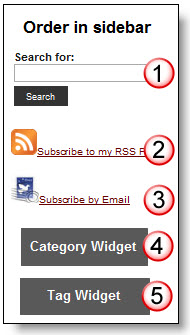
- Always put the most important widgets at the top of your blog
- Search widget – top of blog or top of sidebar
- RSS feed using Feedburner – here’s how to add it to your blog
- Subscribe by email using Feedburner – here’s how to add Feeburner email subscription to your blog
- Effectively use both categories and tags on your post to make it easier to find posts – here’s the difference between categories and tags
- Place category widget above tag widget in your sidebar
- Consider all widgets you add very carefully. Do you really NEED them? Do they help or distract from your blog appearance and content?
- AVOID excessive use of bold, italics and colored font in posts
- Use headings, number listed, bullet lists, short paragraphs to break posts into manageable chunks– here’s my first five tips for writing better blog posts
- Use images effectively to engage attention –- read these posts:
- Avoid blog themes with strong colors or text that is too small that distract the reader from content and make them not want to read it
- Choose a blog title that is immediately meaningful and relevant to first time visitors – this can make or break their decision to become a subscriber.
- For example, the original name Mobile Technology in TAFE for my personal blog is a classic example of a REALLY bad blog title

- For example, the original name Mobile Technology in TAFE for my personal blog is a classic example of a REALLY bad blog title
Here’s what to consider when choosing a blog theme.
And think about using your own custom image header like I’ve done on my personal blog – here’s how to upload custom image headers
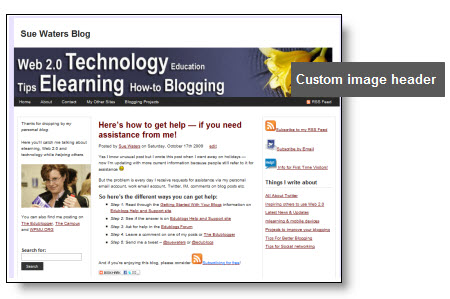
Do a first time reader audit on your blog
A good approach to improving your blog appearance is to “Do a first time reader audit on your blog” by: 
- Following Darren Rowse’s Run a First Time Reader Audit on Your Blog instructions to observe how someone who has never read your blog navigates it
- Contacting a few experience bloggers and ask them to do a quick audit of your blog to give you advice on what works and what doesn’t
How you see your blog and what you write about is often totally different from how viewed by others
What experienced bloggers spot differ from someone who normally doesn’t read blogs.
Can you tell how many times your blog has been viewed?
Knowing how many times your blog has been view doesn’t give you a true reflection of your readership.
Blog readership is made up of two totally separate components: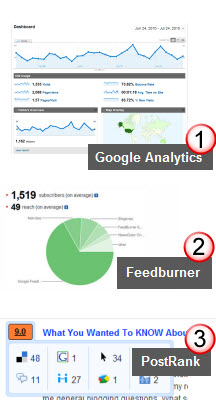
- People who visit your blog site
- Readers who subscribe to your blog using RSS or email subscription
The number of people who read your blog by visiting your blog site is generally considerably lower than those that subscribe by RSS or email subscription.
To understand your readership and changes you need to:
PostRank is also good for monitoring other engagement factors.
How can a blogger attract more readers?
Hard question because it’s a combination of factors including:
1. Your blog’s appearance
Some bloggers write great content but:
- Their blog theme and sidebar clutter distracts readers from appreciating the great content
- Lay out of their posts makes their posts hard to read – here’s my first five tips for writing better blog posts
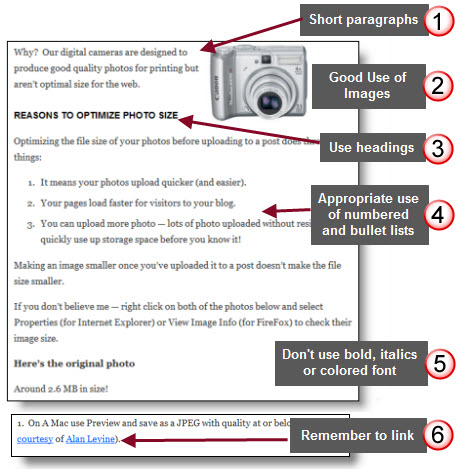
2. Type of posts and how frequently you publish posts:
Bloggers like Stephen Downes, Larry Ferlazzo and Richard Brynes all have high readership because they all:
- Have high posts frequency (post several posts per day)
- Publish posts that provide great information for their readers
As a general rule high posts frequency combined with great content increases readership faster than low post frequency with great content.
But you don’t always need high posting frequency to have high readership.
For example, some one like Vicki Davis posts less frequently but has high readership because of her great content and amazing support of the educational community.
It’s worth checking out Post Rank’s Education list even though their list is based on engagement factors (as opposed to readership) — to check out different edublogging approaches.
3. Connecting with others
Being a blogger isn’t just about publishing posts.
It’s also about reading others posts, taking time to comment on their posts (in meaningful ways), engaging with your readers by commenting back when they leave comments — being a good blog citizen.
A natural part of connecting with others means that more people are likely to become aware of your work.
Don’t forget that linking to someone else’s post is an important part of blogging. Why?
Because reading posts that talks about other bloggers or their posts but doesn’t include links to them is really frustrating for readers. Readers like to follow the links and check out the information in more detail but without the links they can’t!
And when you include links to another bloggers post it sends a pingback to that blogger. Most bloggers check out pingback to their blogs.
Here’s more information on What’s A Pingback? And How To Write Links
But please note — I can’t stress meaningful ways enough when connecting with others, writing comments or using pingbacks.
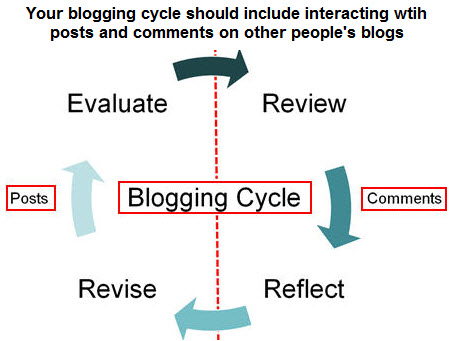
4. How you make people aware of your posts
I know other bloggers feel uncomfortable about this as myself.
But nowadays increasingly readers are reading blog posts by links shared on twitter rather than RSS. So it is now a good idea to tweet when you’ve written a new post.
If you’re not currently using twitter – here’s how to get started.
Bloggers are also using Facebook to connect with more readers – here’s how you do it.

How do you get more people to read your blog and comment?
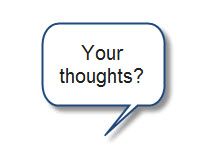 Increasing readership doesn’t necessarily lead to more comments.
Increasing readership doesn’t necessarily lead to more comments.
As a general rule if you publish several post per day readers are less likely to comment on posts than if you publish posts two or three times per week.
Scheduling posts several days apart gives readers time to process your posts and means they are more likely to write comments.
However, it does all depend on how you’ve written your post. Has your post invited a response?
There are skills to writing posts that make readers want to comment — my Comment Count post should give you some ideas.
What are your best practices to ensure uninterrupted publishing posts?
 We’re all always busy — so time can be a challenge.
We’re all always busy — so time can be a challenge.
The key is work out what routine works best you and set up a system that helps you.
For example, decide how often you want to publish posts? Several times daily, once daily or a few times a week?
As a general rule writing a post 2-3 times a week is more achievable for most educators. So how you do it is decide that Tuesdays and Thursdays are the days your posts will publish.
And to make life easier you can write the posts at the same time and then schedule to post on those days.
Some bloggers also find using a calendar where you plan the topic of your posts helps. While I’ll also use Google Document which I update with new post ideas.
How do you determine “worthy” topics to attract readers
Really gets back to the reason why you blog.
For many edubloggers blogging is a bit about their readers and a lot about their own personal needs to reflect on what they are learning or what they want to share.
One of the commonest mistakes I see made by new blogggers is focusing on what they think their readers want to read.
My advice is forget about your readers and focus on your own needs. You’ll be more passionate and it’ll come through in your posts.
And never assume that someone’s already written what you’re saying.
Have bloggers block. How do I get going again, post length, finding my voice etc
Don’t feel alone — we all suffer from it at some stage.
Some find having a break helps.
Whereas breaks don’t help me and the best solution is to force myself to write the post (any post) to get back into my blogging routine.
Post length
Post length is an interesting topic. As a general rule shorter posts are more likely to get comments while longer posts are more likely to be bookmarked.
It’s really about what works for both you and your readers.
For example, this post is definitely too long but I didn’t want to break into a series of posts because I normally post twice weekly. Would it have been better as separate posts for each question? Probably!
Finding your voice
Each blogger has their own distinct writing style which we often call their voice.
Once you’ve got your blogging routine back I’m sure you’ll find your voice comes back with it.
Final thoughts
Thanks to everyone who submitted questions.
Would love to hear your thoughts!
- What did I miss in my responses?
- Do you have any other questions on blogging you would like answered?
If you are enjoying reading this blog, please consider ![]() Subscribing For Free!
Subscribing For Free!
Thank you Sue for a wonderful article, as always. Your posts about blogging and twitting are helpful and interesting to read, can you probably link me to an article about the usefulness of blogging in classrooms, or its importance for education?
@browna68 Yes we’ll often see students choose themes based on their preferred color without considering the impact that makes for someone reading their posts. Hope this post makes them consider that aspect.
@Morgan Thanks for the feedback and please let me know how you go!
THANK YOU!
I plan to reread this post and pick through my blog today to improve.
I just feel there is always room for improvement and you have now given me REAL things to go back and improve.
I can’t thank you enough for this post. 🙂
This is very helpful information about how to develop a blog which is readable and appealing to the audience. I find students do not think about layout and design and how that can impact the reading of the blog. I think that this blog would be a great starting point for a lesson with students.
@Rich Cantrell Thanks for the nice feedback and hope the teachers find the information helpful. And yes the students certainly are the winners. Chuckling regarding driving — now have the car back just 🙂
@mikemcsharry Hope my post helps! Windows Live Writer is an exellent program and I have used it myself.
@lisahuff Face-to-face structure of supporting them is very important if they are fearful and less experienced with technology. It really helps them to know they have someone near by to help. Hopefully they remember my motto of enjoy!
Thanks, Sue for taking the time to share this synopsis of blogging. I’ll be sharing this with about twenty of my colleagues today who are just beginning the educational blogging journey. I think, in the beginning, having a face-to-face support group–where you can talk, share ideas, and have time to blog (post, read, and comment) can be helpful in getting off to a successful start, especially for teachers who are fearful of technology in general. We are attempting to provide this face-to-face structure at my school. We’ll see how it goes!
This is wonderful. Great ideas and very eay to read and implement.
I’ve been making a lot of use of Windows Live Writer and made a user guide. In addition – getting the photos the right size – resizer is a neat free utility that lets you resize multiple pictures at one pass. (Both on my blog http://www.mikemcsharry.com)
Ive offered a free session for teachers in how to use Live Writer and WordPress together – I’ll make you blogpost the ‘pre course’ homework. It’s a brilliant post. Thank you
Sue, As I always find from you. Great tech information. We now have a few teachers on staff blogging (personal & class). I’ll be sharing this with article with them. A big thank you for all you do for the global teaching community. Kids are the real winners. Peace Through Education! Wishing you happy times and watch the driving.
@Dani I hope they find the information helpful. Regarding hosting – not sure as there is a lot we have to consider with anything we posted on The Edublogger.
@Mary I’m also planning on starting a whole series specifically aimed at helping new bloggers get set up and started as opposed to class blogs. They may find that helpful to. If you have any topics you would like us to cover in that series — please let me know.
This is very helpful information, Sue. We are planning a PD session this fall to help elementary teachers get started blogging with Edublogs so I have bookmarked this post to include in our session. Thank you!
Mary
Great post – I’m sharing this with my blog book tours class for authors – they’ve just spend a month improving their blogs in prep for their book tours, and we hit on most of these issues. I have one student/client who is kicking off her tour today, and I’m wondering if you’d consider hosting some future books and other media projects geared toward teachers? More information at http://littlepicklepress.blogspot.com
Thanks for thinking about it – just followed you on Twitter, too, where I saw your name in a RT. Happy day! ~ Dani